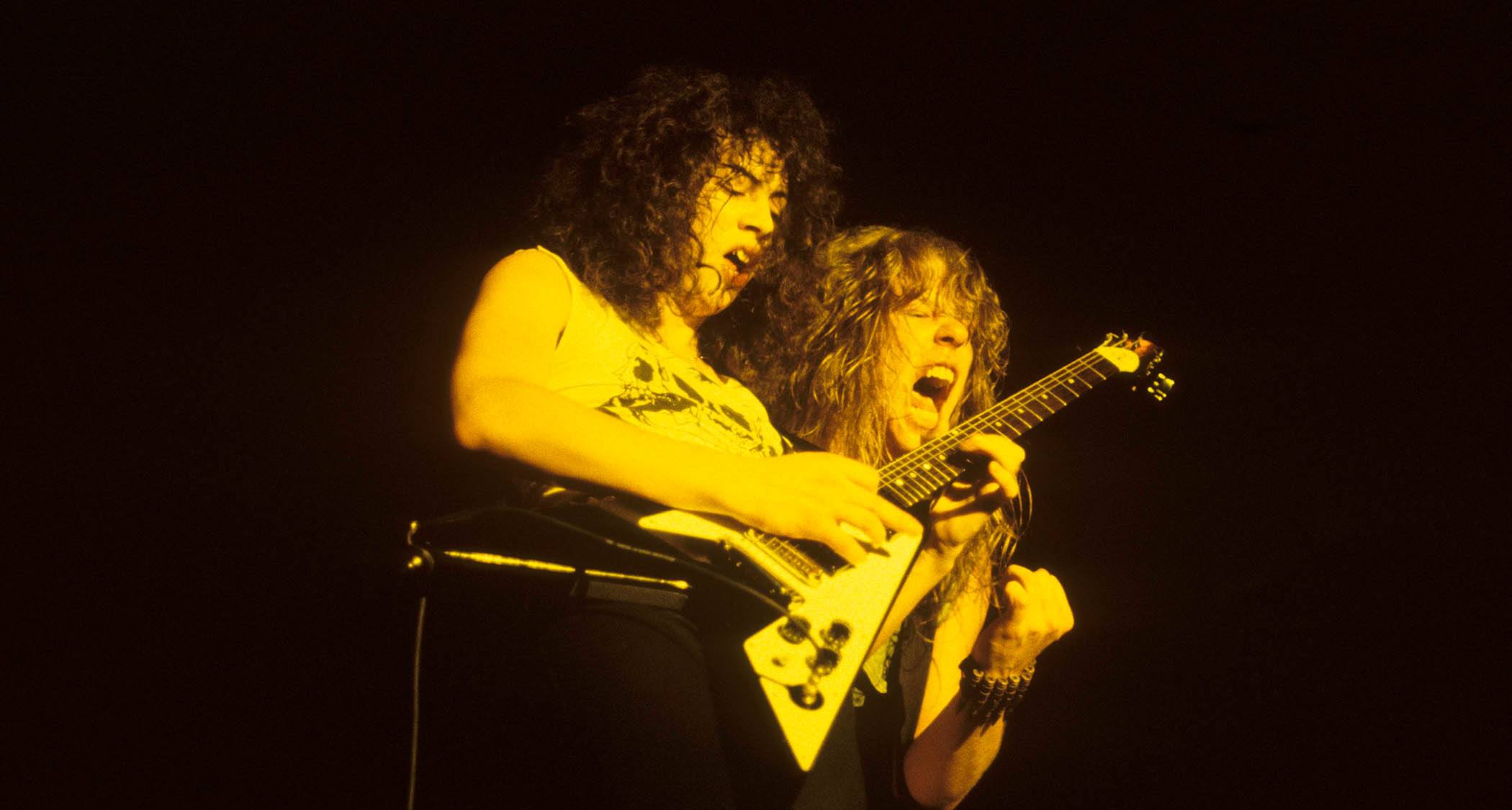
You’d be hard-pressed to find Metallica songs that hit harder than the four that open Ride the Lightning. If you were there in July of ’84, you remember where you were the first time you gazed at the album’s cover, which depicts an electric chair in the middle of a midnight thunderstorm.
Based on that grim imagery, it’s expected that themes of death and destruction would run rampant throughout Ride the Lightning. But this was a thrash metal album, and the rage nestled up against sociopolitical commentary. Despite Metallica’s inherent youth, Ride the Lightning found success tackling tricky subjects… and chugging riffs and hair-raising solos.
The latter portion of that statement came into greater focus when Kirk Hammett told Guitar World in 2014: “Around the time we were writing Ride the Lightning, I was taking guitar lessons from Joe Satriani. All the stuff I learned from Joe impacted my playing on Ride the Lightning.
“He taught me stuff like figuring out what scale was most appropriate for what chord progressions. He taught me how to pick the notes I wanted for guitar solos, as opposed to just going for a scale that covered it all. He also helped me map out the whole chromatic-arpeggio thing, and the importance of positioning and minimizing finger movement. That was a really important lesson.”
Going back to Ride the Lightning’s opening four tracks, Fight Fire with Fire, Ride the Lighting, For Whom the Bell Tolls and Fade to Black, it’s evident that Hammett took what he’d learned and made a conscious decision to stamp his imprint across thrash metal, which, at the time, was not a fully established genre.
This was before Master of Puppets (1986) would cement Metallica as legends. And it was years before the Black Album, aka Metallica (1991), turned them into the biggest band in the world. Back in ’84, James Hetfield, Lars Ulrich, Cliff Burton and Kirk Hammett were four young hellraisers looking for good times via skull-stomping music, and boy, did they find it.
From the jump, Ride the Lightning showed growth, as Fight Fire with Fire opens with an acoustic section by Hammett before Hetfield kicks the door in with a riff akin to a sonic assault, at which point Hammett pops the clutch, and chimes in with power chords and a blood-letting solo that somehow simultaneously errs toward low-key blues.
Three tracks later, on Fade to Black, Hammett and Hetfield showed their worth via an amalgam of downstroke riffage and perfectly phrased, lyrical solos that found Hammett doing anything but relying on only his wah pedal for interest.
These two songs are important signposts for Metallica, as was the ominous For Whom the Bell Tolls, as they proved the band was capable of stepping outside the shadow of Dave Mustaine, who, despite being fired before its recording, claimed three songwriting credits on Kill ’Em All.
Throughout Ride the Lighting, Hetfield showed why he’s the finest rhythm guitarist in metal and a lyricist capable of tackling heavy subjects like suicide and loneliness. The result was Hetfield and Hammett emoting their rage-filled compositions in ways that no other heavy metal guitar duo was at the time.
Along with that growth in musicianship, Metallica added variety to Ride the Lightning after Fade to Black wrapped by swooping into Trapped Under Ice, a speed metal cut that lifts off and soars into Escape – a dead ringer for an early ’80s Judas Priest cut, with just a touch of blood-soaked buzzsaw blade riffage dusted across the top.
And that wasn’t arbitrary, as Metallica, specifically Burton, Hetfield and Hammett, applied what they’d learned from Kill ’Em All and combined it with youthful rage and existing knowledge.
“Cliff studied music in college,” Hammett told GW in 2014. “I had a grasp of music theory, thanks to Joe, but Cliff went the whole length and learned musical theory and everything. [Cliff] was way into harmonies, and James really absorbed the dual-harmony thing and took it to heart. He made it his thing, but it was originally Cliff’s. Cliff also inspired James greatly on counterpoint and rhythmic concepts.”
Regardless of who brought what idea to the table, Metallica was speaking a new language across Ride the Lightning. To Hammett’s point, many of Burton’s nuances are present throughout Creeping Death. But digging into the track, it reads back as a riff tour de force via Hetfield, which Hammett sends home with a bliss-toned solo.
But of all the tracks on Ride the Lightning, the most daring is the nearly nine-minute epic instrumental closer, The Call of Ktulu. With gentle arpeggios in stark contrast to a heavy, doubled riff and multiple iconic solos, the track proves that as a soloist, Hammett isn’t reliably repetitive, but, instead, a definitive thrash maestro.







